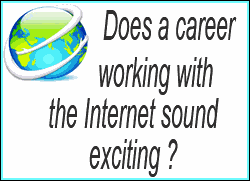 Joel
Smiley, new director of the Lincoln & Logan County Development
Partnership, arranged the opportunity for local officials to meet
with key state agency representatives at the Logan County Courthouse
on Wednesday evening. The goal was to give the state agencies an
opportunity to see Logan County infrastructure and growth needs as a
whole and to help communities find funding. Joel
Smiley, new director of the Lincoln & Logan County Development
Partnership, arranged the opportunity for local officials to meet
with key state agency representatives at the Logan County Courthouse
on Wednesday evening. The goal was to give the state agencies an
opportunity to see Logan County infrastructure and growth needs as a
whole and to help communities find funding.The meeting opened
with a welcome from Lincoln Mayor Beth Davis-Kavelman and Logan
County Board Chairman Dick Logan. They each thanked everyone for
coming. Davis-Kavelman recognized the value of getting assistance
and observed that it can be a lengthy, but worthwhile process. She
recalled that it was more than eight years ago, as county board
members, that she and Logan made a request to U.S. Sens. Dick Durbin
and Peter Fitzgerald and U.S. Rep. Ray LaHood for funds for the
Fifth Street Road project. LaHood has secured $800,000 toward that
project.

During the first hour of the meeting, agency representatives
introduced themselves and identified the core of what each of their
offices do and what they might have to offer.
Also, community representatives were asked to describe their
sewer and water infrastructure needs. As the needs were explained,
various agency representatives jumped in with what program they
might have to offer.
When the formal presentations ended, the next hour was spent with
face-to-face networking. It was during this time that some of the
more direct, detailed discussions took place. During the relaxed
interactions some broader applications were discovered that might
meet other local development needs.
___
Presentations
(State agency, representative present and short summary)
USDA, Jim Vanetta
We are the lending arm for rural America, Vanetta said. The USDA
has 40 different programs we administer. The agency does facilitate
some grants, but mostly has guaranteed loans. If you have a desire
or need and can pay for it, we can probably help you, he said.
Illinois Department of Commerce and Economic Opportunity,
Patrick Davis
As a population of 50,000 or less with low to moderate income,
Logan County communities qualify for the Community Development
Assistance Program, known as CDAP. Grants are available to
communities for economic development projects, such as bringing in
business or expanding a business, and may be used for construction
or infrastructure; also for public facilities, with priority on
water, sanitary and storm sewer; for housing rehabilitation,
including retrofitting for handicapped; and for engineering for
large projects.

Illinois Finance Authority, Kristi Conrad
"We are the capital arm of economic development," Conrad said.
Their department's primary focus is on health, life and safety
needs. Conrad said that 60 percent of their projects are water or
sewer projects.
They also offer capital for a diversity of both public and
private projects that create jobs, improve quality of life or
provide return on investment in Illinois.
They provide nonconventional, low-cost financing by way of bonds,
loans, guaranteed programs, leasing and interim financing.
Illinois State Treasurer's Office, Erick Nickerson
The treasurer's office offers below-market, low-interest loans
through the Opportunity Illinois program. Communities can get loans
for infrastructure and for public buildings.
The office also offers three "quality of life" consumer loan
programs that are available to individuals such as storm victims for
repairs, to citizen soldiers to make ends meet, and to those with
disabilities for construction or equipment.
At the community development level, loans are available to
Illinois organizations for facility and equipment financing.
We have more than 300 banks, some local, that participate,
Nickerson said. He plans to come back to the area to continue to
secure more banks for assistance at the local level.

Illinois Environmental Protection Agency, Elmo Dowd
Dowd said that the regulating agency has a sewer and water loan
program.
They also have grants available.
One of the current goals of the agency is to reduce non-pollution
into watersheds, such as rain that runs off a parking lot or
buildings.
Of particular interest, he said that few people are aware that
study funds are available.
Also, many communities are unaware that the IEPA has design
engineers available to help with preliminary infrastructure costs.
Carol Merna, district deputy chief of staff for congressman
Ray LaHood
Merna addressed the group and urged community leaders to keep in
touch with our state and federal legislators. She said that it is
important to let them know our needs. They just don't know the value
of the development programs for rural America. She said that their
office has had to fight tooth and nail to keep some of these
financing programs that are the livelihood to rural development,
which affects 80 percent of the state.
___
[to top of second column]
 |

Infrastructure needs
Communities were asked to share information on their water and
sewer needs.
Lincoln
Mark Mathon, engineer for the city of Lincoln, said that the city
is looking at sewer and water extensions out Fifth Street Road,
extending sanitation to the end of Westminster Road, slip-lining old
sewer lines on Union Street, replacing several more lift stations
that are 20 years old and pushing their life span, and the extension
of Fifth Street Road
Mount Pulaski
Mike Patridge, public works director for Mount Pulaski, said that
they are working with an aging sewer system installed in 1958. It
has four pump stations that all needed replacing at $300,000 each.
One was replaced four years ago. Three more still need replacing.
The sewer rate is an issue in the community; citizens feel they are
paying too much, but it isn't enough to keep up with the expenses
now, and they will be seeing another hike in November.
Approximately $900,000, if costs remain the same, is needed for
the other three pump stations.
An agency rep responded that this would be a place that CDAP
kicks in. The Department of Commerce and Economic Opportunity could
do the analysis for you.

Atlanta
Mayor Bill Martin said that the Atlanta community is in need of a
new, good well for their main water supply. The town sits on a dome
of bedrock, but is surrounded by the Mahomet Aquifer.
Drawdown over the years has lowered the water table. They'd like
to be able to implement a new source in five years. This will
probably mean piping water in from outside town.
Latham
Population 400, Latham is facing two major projects. First, a
secondary well is needed.
The water main was installed in the 1930s. There are breaks and
sediment buildup in the sewer lines. They are in dire need to
replace this system within five to eight years.
Emden and San Jose
Mike Burris from Crawford, Murphy and Tilly Inc., Springfield,
has been working with the communities of Emden and San Jose for
several years.
"At San Jose, the first phase of water system improvements were
upgraded with the assistance of a CDAP grant. Additional water
distribution system improvements are planned," he said.
On the wastewater side, the village needs to replace or upgrade
two existing pump stations.
At Emden, the village has submitted a facility plan to the IEPA
for a wastewater treatment facility and sewer system. There are also
several water mains that need to be replaced and some dead-end water
mains that need to be looped.

Elkhart
Steve Anderson, village president, said that at Elkhart the
emphasis is on water. The water tower is 75 years old, with a
50,000-gallon capacity. It needs replacement with a capacity of
100,000 to 125,000 gallons. The water plant was last updated in the
1970s. Half the lines in town have been replaced, and half need
replacing.
Sewer work is needed, but the water needs to come first.
___
The agency representatives said that the state recognizes that it
is important to help our communities with quality-of-life needs, as
well as to assist in opportunities for economic growth. What is good
for our communities is good for the state, and we are here to help,
was the attitude conveyed by all.
Conrad emphasized that the agencies work together. We see each
other at our offices and talk almost daily, she said. We share
information with one another about a community's needs and look for
the best mix of loans and grants "so that you get the best bang for
the buck," she said. "It is in the state's best interest as well."
She added that it is important when planning a project to make
early contact with the agencies. And, keep frequent contact with
your state legislators, who can advocate on your behalf, she said.

In conclusion to the evening, the group broke up to allow direct
networking with agency staff. Specific and some more diverse
discussions took place during the one-on-one interaction time.
Wanda Lee Rohlfs, present at the meeting as both a city alderman
and as director for Main Street Lincoln, was able to find more
possible resources for Main Street projects. She discussed the
possibilities of funding for the restoration of one particular major
historic building in need of upgrades.
At the close, the lingering crowd of both community and agency
representatives all seemed pleased with the exchanges and left with
the promises of further contact.
[By JAN YOUNGQUIST] |